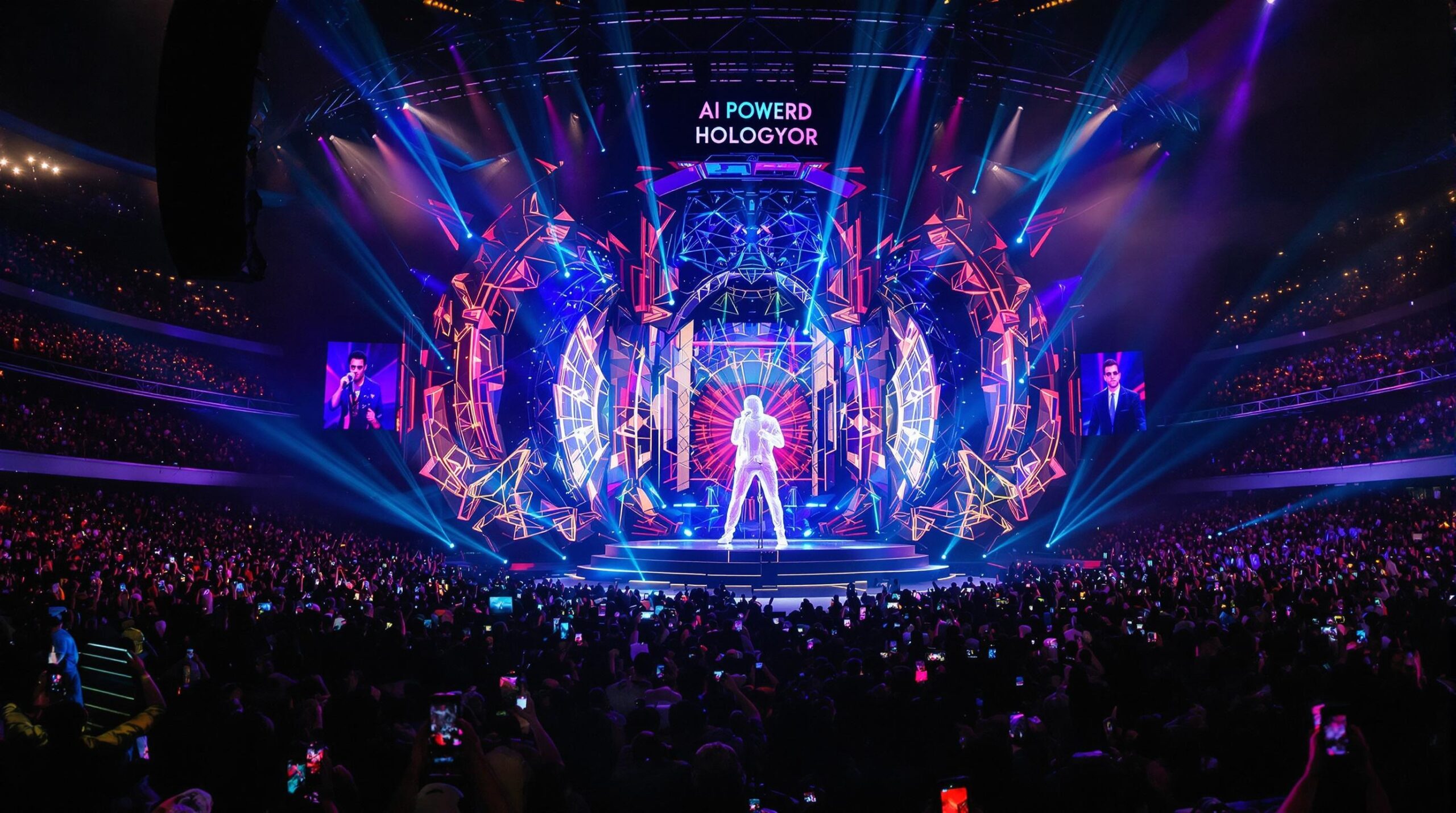Holographic technology has come a long way since its inception, transforming from a spectacle into a mainstream tool. AI-powered holograms are revolutionizing how fans experience concerts worldwide, breaking traditional barriers of live performances. This cutting-edge fusion of artificial intelligence and holography is reshaping music events and setting new standards in the entertainment industry.
The Emergence of Holographic Concerts
Concerts have long been venues of passion, with fans gathering to witness live musical performances. Holographic technology has introduced an entirely new dimension to this experience. Early adopters of holographic concerts aimed to bring back legendary artists posthumously, captivating audiences with performances that seemed real. Utilizing AI, these holograms recreate lifelike images and integrate machine learning to enhance performance dynamics. The synergy of holography and AI introduces diverse applications for fans and artists.
Enhancing Audience Experience
AI-powered holograms provide fans with immersive experiences, making concerts more interactive. Unlike traditional concerts, holographic performances can adapt to audience reactions in real-time. Machine learning algorithms analyze audience emotions, adjusting the performance accordingly to maximize engagement. This technology transforms concerts into two-way interactions, allowing fans to contribute to the unfolding show. Fans worldwide now enjoy personal and tailored performances, transcending the limitations of physical concerts.
Bridging Geographical Gaps
Due to travel constraints or limited tour schedules, geography often restricts fans’ ability to attend live concerts. Holographic technology bridges this gap by bringing live experiences to fans anywhere. AI-powered holograms can be deployed simultaneously in multiple locations, offering the same energy and excitement. This capability democratizes access to live music, allowing fans from different regions to experience concerts together. Consequently, artists can reach broader audiences without extensive touring, benefiting performers and fans.
Environmental and Logistical Benefits
Touring involves significant environmental and logistical challenges, often leading to a substantial carbon footprint. Holographic concerts address these concerns by minimizing travel needs for artists and their teams. AI systems can replicate every nuance of a live performance, substantially mitigating environmental impact. This shift not only supports sustainability but also reduces logistical complexities. Organizers face fewer challenges in staging large-scale events, ensuring smoother and more efficient concert planning.
Financial Implications for the Music Industry
The advent of AI-powered holograms presents intriguing financial opportunities for the music industry. Production costs for holographic concerts are typically lower than traditional tours, presenting cost-effective alternatives. Artists can hold more frequent concerts without incurring travel expenses, potentially increasing revenue streams. The ability to monetize holographic performances could lead to new business models and partnerships within the industry. Fans benefit, too, with potentially lower ticket prices, making high-quality entertainment more accessible.
Technology Behind AI-Powered Holograms
The success of AI-powered holograms hinges on advanced technology, combining seamless imaging and sophisticated machine learning algorithms. High-definition projections create realistic holograms with precise detail, enhancing the authenticity of performances. Machine learning enables these holograms to learn and adapt various live show aspects, from dance routines to vocal nuances. Such technological intricacies are crucial for delivering unforgettable concert experiences that captivate audiences.
Overcoming Technological Challenges
Integrating AI and holography introduces significant challenges, requiring ongoing research and development to achieve seamless concerts. One major hurdle involves ensuring synchronization between audio, visual, and interactive components of a holographic performance. Advances in machine learning and real-time analytics are crucial for meeting these challenges. Continuous innovation is necessary to enhance performance quality and reliability, enabling this technology to evolve rapidly.
Ethical Considerations and Artist Consent
The use of holograms raises ethical questions, particularly regarding posthumous performances and artist consent. Families and estates should approve holographic concerts when showcasing late artists, respecting their legacy. Furthermore, artists who perform through holograms while alive should control their likeness and image usage. As this technology advances, establishing clear ethical guidelines is essential to protecting artists and audiences.
The Future of Concerts: A Hybrid Model
AI-powered holograms likely won’t replace traditional concerts but instead complement them. A hybrid model where live and holographic performances coexist is emerging. This approach offers diverse experiences for fans, blending the intimacy of live shows with the awe-inspiring capabilities of holograms. The concert landscape becomes more prosperous and inclusive by embracing traditional and technological advancements. Fans stand to gain from this expanded range of musical experiences.
A Global Vision for Accessible Entertainment
The evolution of AI-powered holograms signifies a broader shift towards globally accessible entertainment. As technology improves, the costs and logistical barriers to entertainment will decline. This change enhances cultural exchange and connectivity, enabling global audiences to share in unique musical experiences. Ultimately, AI-powered holograms enable a more interconnected world, celebrating and exploring diverse music genres across continents.
Conclusion
AI-powered holograms represent a bold innovation reshaping the concert experience for fans around the globe. This technology redefines what concerts can offer by enhancing audience interactivity, bridging geographical divides, and addressing environmental concerns. As ethical considerations guide its development, AI-powered holograms promise an exciting future for music enthusiasts everywhere. Embracing traditional concerts and holographic innovations, the music industry is geared towards a vibrant, diverse future.

